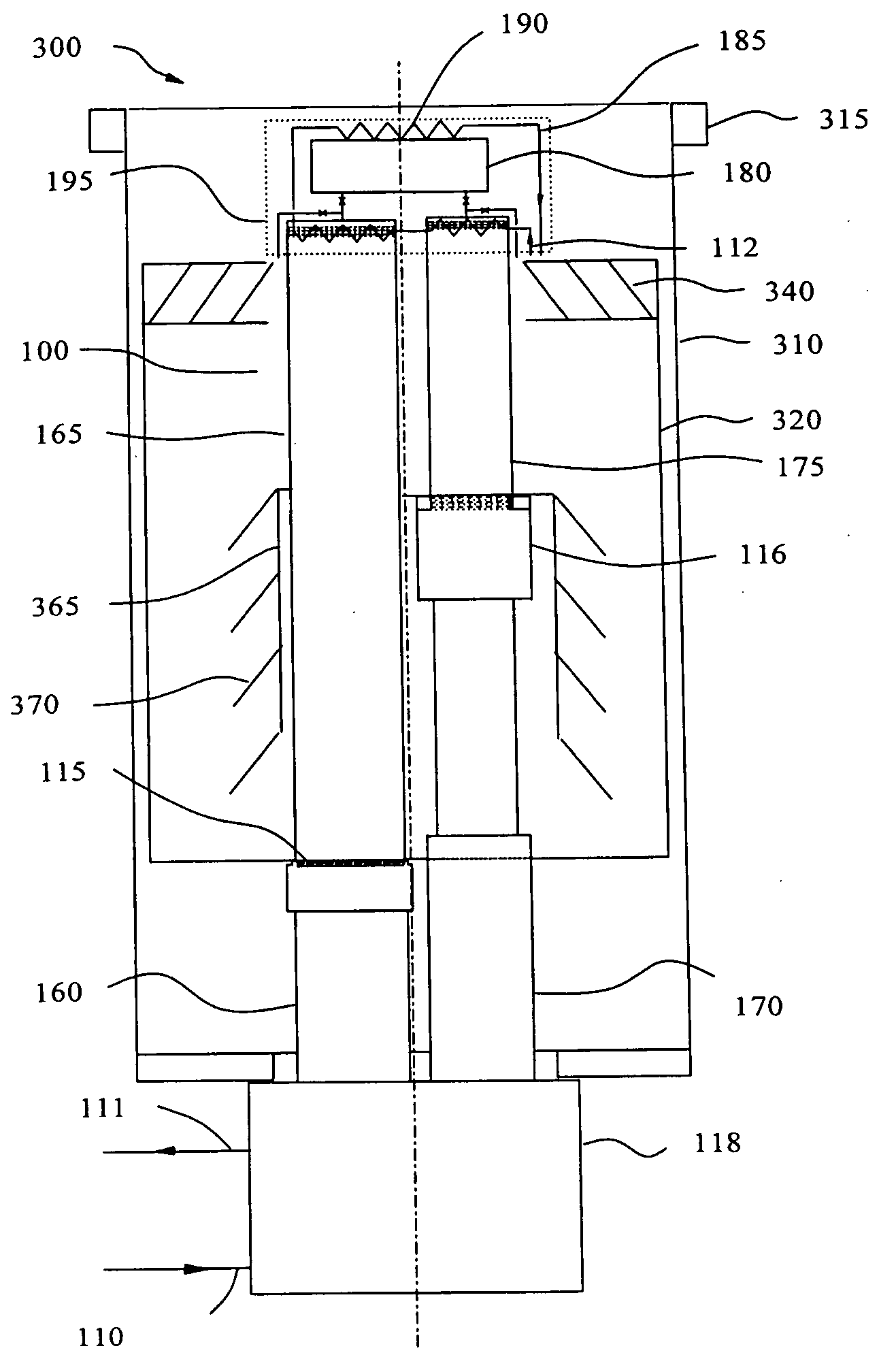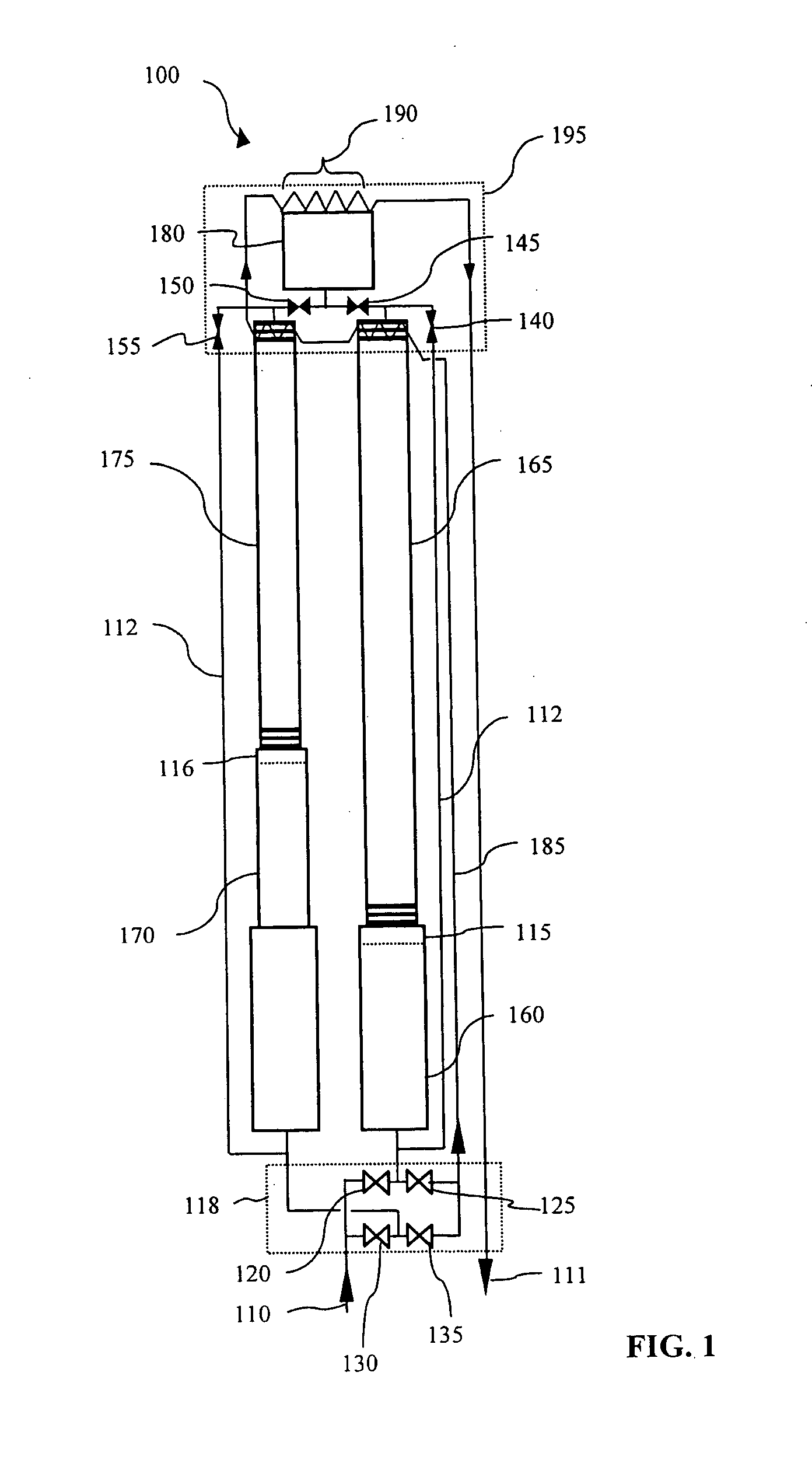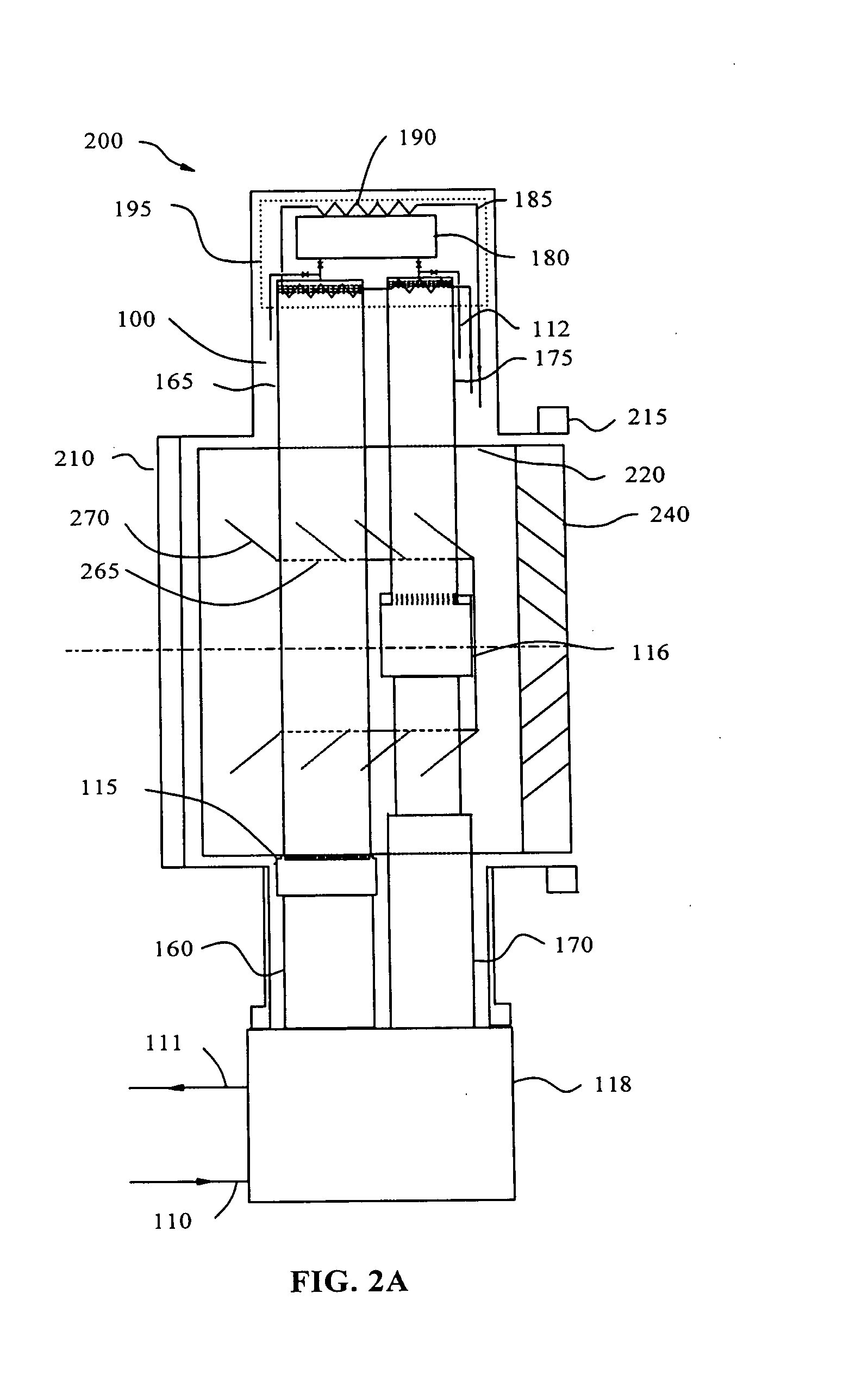Cryopump with two-stage pulse tube refrigerator
a technology of cryopump and pulse tube, which is applied in the field of cryocoolers, can solve the problems of system significantly more vibration, production defects, and most vacuum chamber processes are very sensitive to vibration
- Summary
- Abstract
- Description
- Claims
- Application Information
AI Technical Summary
Problems solved by technology
Method used
Image
Examples
first embodiment
[0041]FIGS. 2a, 2b, and 2c, illustrate a side-view, top view, and an end view respectively, of a cryopump 200 including a gas supply 110, a gas return 111, a valve assembly 118, a first stage regenerator 160, a first stage pulse tube 165, a first stage cold station 115, a second stage regenerator 170, a second stage pulse tube 175, a second stage cold station 116, a hot end assembly 195, a housing 210, a flange 215, a first stage thermal shield 220, inlet louvers 240, and a second stage cryopanel 265. Cryopanel 265 further includes fins 270.
[0042] Valve assembly 118 includes active valves 120, 125, 130, and 135, shown in FIG. 1, along with a drive motor [not shown]. Gas supply 110 and gas return 111 are supply and return lines for providing a working gas (helium) within cryocooler 100. The gas supply and return lines are connected to a through flow type compressor.
[0043] Hot end assembly 195 includes the hot ends of pulse tubes 165 and 175, buffer tank 180, fixed orifices 140, 145,...
second embodiment
[0053]FIG. 3 illustrates the invention, where the element numbers are identified as described above.
[0054] The refrigeration systems of FIGS. 2 and 3 operate on the same principle but are configured in two different orientations. Because the pulse tube has to be operated with the hot end on top, it has to be mounted nearly vertically. A side inlet pump is shown in FIG. 2; a top inlet pump is shown in FIG. 3.
[0055] The side inlet pump, FIG. 2, is more effective because the hot end can be further from the cold panels than the top inlet design, FIG. 3. Furthermore, it is easier to get the cold inlet louver 240 closer to the flange, so the pumping speed will be higher for the side inlet pump than the top inlet pump. Pumping speed for the top inlet pump is also reduced because the hot end of the pulse tube blocks some of the flow.
[0056] Cryopump 300 includes a housing 310, a flange 315, a first stage thermal shield 335, inlet louvers 340, and a second stage cryopanel 365. Cryopanel 365...
PUM
| Property | Measurement | Unit |
|---|---|---|
| Cryogenic temperatures | aaaaa | aaaaa |
| Cryogenic temperatures | aaaaa | aaaaa |
| Cryogenic temperatures | aaaaa | aaaaa |
Abstract
Description
Claims
Application Information
 Login to View More
Login to View More - R&D
- Intellectual Property
- Life Sciences
- Materials
- Tech Scout
- Unparalleled Data Quality
- Higher Quality Content
- 60% Fewer Hallucinations
Browse by: Latest US Patents, China's latest patents, Technical Efficacy Thesaurus, Application Domain, Technology Topic, Popular Technical Reports.
© 2025 PatSnap. All rights reserved.Legal|Privacy policy|Modern Slavery Act Transparency Statement|Sitemap|About US| Contact US: help@patsnap.com



